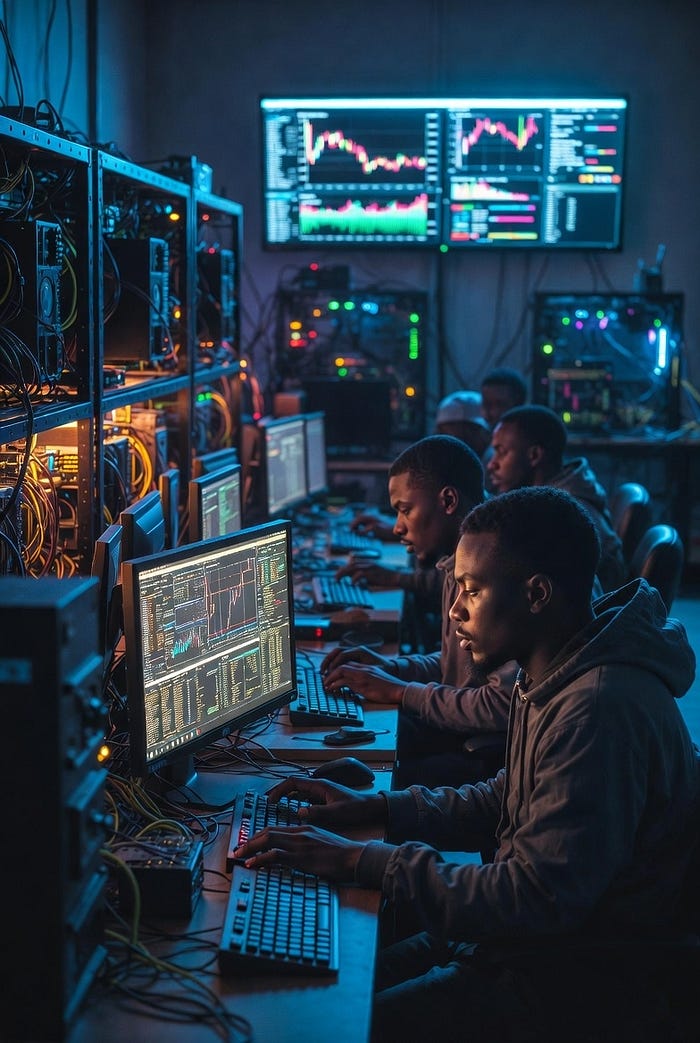⚡ Understanding Proof of Work: How Blockchain Consumes Power

🌍 Introduction
You’ve probably heard that Bitcoin uses as much electricity as a small country, but what does that actually mean? Why would a digital currency consume so much power?
The answer lies in a concept called Proof of Work (PoW) — a clever yet energy-hungry mechanism that secures the blockchain network. Let’s unpack it step by step in simple terms.
If you haven’t yet read my earlier article, start with
👉 Consensus Mechanisms Explained: How Blockchain Networks Agree on the Truth — it provides the foundation for understanding how blockchains agree on data without a central authority.
🔹 What is Proof of Work?
Proof of Work is a consensus mechanism — a way for computers around the world (called miners) to agree on which transactions are valid without needing a central authority.
Here’s how it works:
- Thousands of miners compete to solve a mathematical puzzle
- The puzzle is extremely difficult to solve but easy for others to check
- The first miner to solve it gets to add the next block to the blockchain and earn a reward (newly created Bitcoin + transaction fees)
This process ensures that everyone agrees on the same transaction history and that no one can cheat or double-spend coins.
🔹 The Mining Puzzle (In Simple Terms)
Imagine you’re trying to guess a secret code that unlocks a digital safe. The only way to open it is to keep guessing — billions of times per second — until you find the right number.
That’s exactly what miners do. They try different “nonces” (numbers) until their computer finds a hash value that meets a specific target.
If it’s lower than the target, boom! — they’ve mined a new block.
🔹 Visual Breakdown of the Process
Here’s how the process looks technically:
1️⃣ Gather pending transactions
2️⃣ Build a block header:
- Previous block hash
- Merkle root (summary of all transactions)
- Timestamp
- Nonce (variable number)
3️⃣ Hash the block header using SHA-256
4️⃣ If hash < target → valid block found
5️⃣ If not → change nonce and try againThis continues nonstop across the entire global network of miners.
🔹 Why So Much Power?
Each mining attempt requires computing power — and when millions of miners compete, the total electricity usage skyrockets.
The Bitcoin network, for instance, consumes roughly the same amount of electricity as a small country like Kenya or Argentina.
That’s because the network intentionally makes puzzles harder as more miners join — ensuring blocks are still mined about every 10 minutes.
In other words: the more competition, the more power burned.
🔹 Why Use So Much Energy on Purpose?
It might sound wasteful, but this is by design.
The energy cost gives Bitcoin its security. To attack or rewrite the blockchain, a hacker would need to control over 50% of the global mining power — which means billions of dollars in electricity and equipment.
So instead of trusting a central bank, Bitcoin makes cheating economically impossible.
🔹 The Environmental Debate
PoW’s massive energy consumption sparks ongoing debate:
- Critics say it’s environmentally unsustainable.
- Supporters argue that much mining now uses renewable energy, like hydro in Ethiopia, solar in South Africa, or geothermal in Kenya.
Either way, the blockchain community is actively exploring greener alternatives, like Proof of Stake (PoS), which achieves similar goals with far less power.
🔹 Wrapping Up
Proof of Work is the engine that powers Bitcoin — a system that turns electricity into trust.
It may seem energy-intensive, but that’s what makes Bitcoin secure, decentralized, and resistant to manipulation.
So next time you hear “Bitcoin uses as much power as Kenya,” you’ll know exactly why — it’s not waste, it’s the cost of global digital security.
Listen To The Article

Black Friday 30%
Offer









